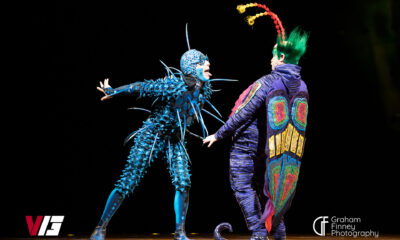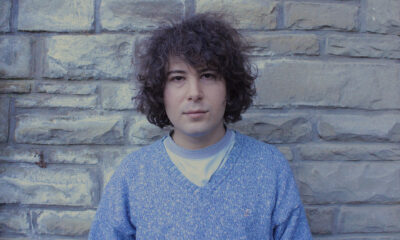Reviews
Once Upon a Time in the West (#092)
“100 Films for 100 Rainy Days”

Directed by: Sergio Leone » Written by: Sergio Leone & Sergio Donati » Based on a Story by: Dario Argento & Bernardo Bertolluci, 1968 » Region/Time: USA/Italy, 165/171 minutes
Starring: Charles Bronson as Harmonica » Claudia Cardinale as Jill McBain » Jason Robards as Cheyenne » Henry Fonda as Frank » Gabriele Ferzetti as Morton.

Harmonica: “Did you bring a horse for me?”
Gunman: “Looks like we’re shy one horse.”
Harmonica: (shaking his head): “Looks like you brought two too many.”
Looking over my personal canon of 100 movies for 100 rainy days (aka my favourite films), I notice that there are only two westerns, and both are revisionist. That is too bad, so here are some of my favourite westerns that apparently didn’t make this list: The Ox-Bow Incident, The Gunfighter, My Darling Clementine, The Man Who Shot Liberty Valence, The Good, the Bad and the Ugly, The Searchers, Red River, The Far Country, Rio Bravo and Stagecoach. Hell, even the samurai films Yojimbo and Sanjuro are essentially westerns.

Once Upon a Time in the West was Italian director Sergio Leone’s fourth, most intricate and most satisfying western in his unique “spaghetti western” style. Spaghetti westerns were so named because, rather than being produced in Hollywood, they were Italian productions. Leone was highly influenced by many of the films in my list above, both those from the USA and Kurosawa’s samurai re-imaginings. Once Upon a Time… is a distillation of a long 50+ year history of westerns in the cinema blown up in glorious widescreen Technicolor and directly quotes many films that would have been very familiar to viewers of the time, such as the coach ride through Monument Valley.
The film begins with one of the greatest scenes in the movies – an extended 10 minute title credit sequence in which three gunmen wait at a train station for someone to show up. Giant close-ups of the characters’ faces as they wait – beleaguered by flies and dripping water – are contrasted by shots of train tracks disappearing into the distance. There is no music except for the creaking of windmills and buzzing of insects. Suddenly, the train arrives, and there is Harmonica, playing his own theme song on his harmonica. A quick gunfight ensues and the movie jumps into action.

It is no accident the opening scene takes place at a train station as the film deals with the opening up of The West via the inexorable spreading of train tracks. One bad man, Morton, wants to maintain his monopoly on the train tracks, but the McBain family homestead stands in his way. Not to be stopped by such trifles, Morton dispatches his henchmen, led by Frank, to “deal with” the family. In one of the iconic entrances of villains in cinema, the McBain family is gunned down except for the youngest son. He watches, terrified, as a group of gunmen in long overcoats appear through the gun smoke and tall grass. The lead gunman comes up to the boy, pulls his gun and fires. The camera pans up into the ice-blue eyes of Henry Fonda. To understand the impact this would have, remember that Fonda, like Jimmy Stewart, had been one of the most beloved actors in the world since the 1930s, including many westerns, such as The Ox-Bow Incident and My Darling Clementine mentioned above. Frank would be the one and only time he played a villain.
The third gunfighter, Cheyenne, is given an equally dramatic introduction, which I won’t ruin here. The rest of the movie deals with the interplay between Frank, Cheyenne and Harmonica, who has his own agenda. The story of these three men, however, all revolve around the actions of the central character, McBain’s widow, played by the unbelievably beautiful Claudia Cardinale, who arrives in town to find her family murdered, and hires Harmonica to find out who did it.

The film ends with a duel between two characters, a shot-for-shot remake of the duel in The Last Sunset. However, the victor is neither character, but Jill McBain, who breaks the railroad monopoly and establishes a new town on her land. What lingers in the memory is not the plot, but a collection of perfectly captured moments: the reveal of Frank or of Cheyenne’s manacles, Harmonica on the train tracks, Jill filmed through a lace canopy, or Morton helpless without his train car.
Although a critical and commercial failure at the time of release – in his 1969 review, Roger Ebert called the movie overlong and that Leone had an “inability to call it quits” – the movie is now thought to be the greatest western ever made. Potential viewers should be warned that Once Upon a Time in the West does take its time, and the full extent of the plot machinations is not revealed until well into the second hour.

Up Next in the Film Canon: Existentialism in the Mediterranean.
-

 Alternative/Rock1 day ago
Alternative/Rock1 day agoThe V13 Fix #010 w/ High on Fire, NOFX, My Dying Bride and more
-

 Hardcore/Punk1 week ago
Hardcore/Punk1 week agoHastings Beat Punks Kid Kapichi Vent Their Frustrations at Leeds Beckett University [Photos]
-

 Culture1 week ago
Culture1 week agoCirque Du Soleil OVO Takes Leeds Fans on a Unique, Unforgettable Journey [Photos]
-

 Alternative/Rock7 days ago
Alternative/Rock7 days agoA Rejuvenated Dream State are ‘Still Dreaming’ as They Bounce Into Manchester YES [Photos]
-

 Music2 days ago
Music2 days agoReclusive Producer Stumbleine Premieres Beat-Driven New Single “Cinderhaze”
-

 Culture3 days ago
Culture3 days agoDan Carter & George Miller Chat Foodinati Live, Heavy Metal Charities and Pre-Gig Meals
-

 Indie1 week ago
Indie1 week agoMichele Ducci Premieres Bouncy New Single “You Lay the Path by Walking on it”
-

 Alternative/Rock1 week ago
Alternative/Rock1 week agoWilliam Edward Thompson Premieres His Stripped-Down “Sleep Test” Music Video




